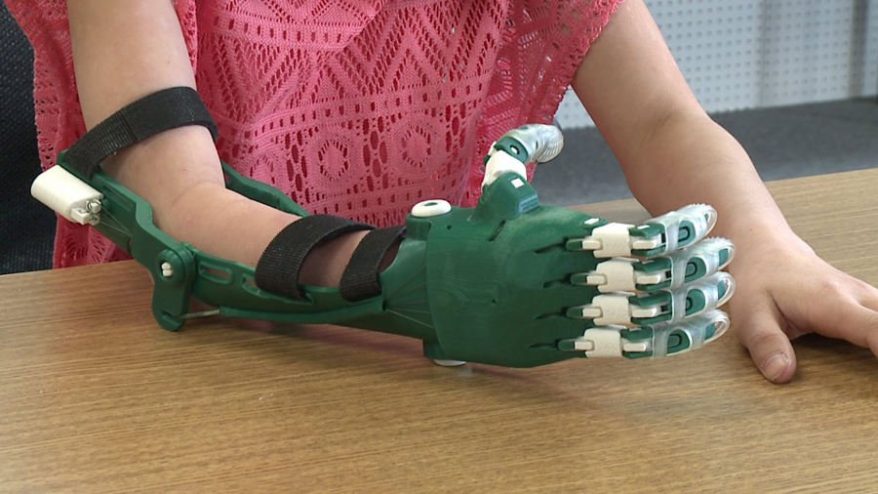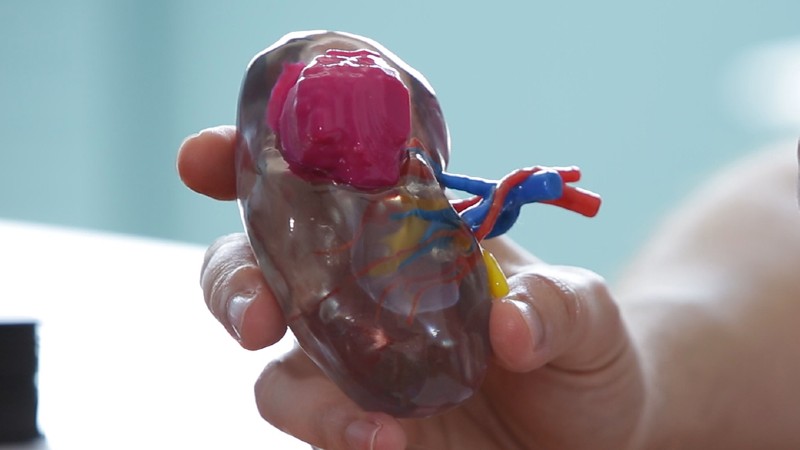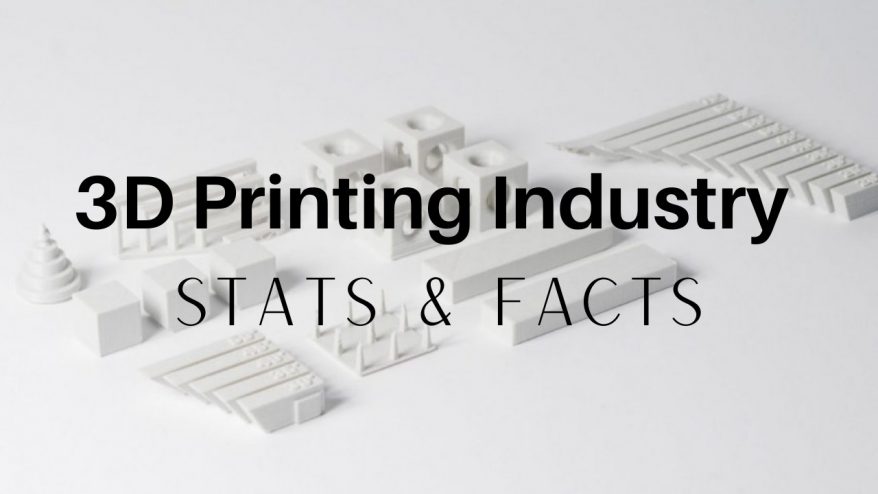Key Takeaways
- Medical: 3D printing can create customized dental tools, prosthetics, organs, and skin for better patient care and treatment.
- Shelters: 3D printing can build affordable, sustainable, and personalized homes in a short time, addressing housing shortages and homelessness2.
- Vehicles: 3D printing can produce innovative and efficient cars, boats, and even lunar infrastructure, accelerating automotive and aerospace development3.
- Wearables: 3D printing can merge fashion and technology with unique and intricate garments, shoes, jewelry, and costumes4.
3D printing has a lot of uses outside of the decorative or fun things we all start with. From rapid prototyping in the automotive industry to 3D printing living tissue, the additive manufacturing process is revolutionizing a lot of important industries.
Here we’ll look at some of the best uses for 3D printers across many different fields, including everything from wearable to edible and even medical devices.
How 3D Printing is Changing the World
- Medical: Revolutionizing patient care with 3D printed transplantable organs and specialized dental tools.
- Shelters: Addressing housing shortages with rapid, sustainable 3D printed home solutions.
- Vehicles: Accelerating automotive innovations, from energy-efficient cars to restoring classic models.
- Wearables: Merging fashion and technology with unique 3D printed garments and accessories.
- Rapid Prototyping: Streamlining development across industries with quick and efficient 3D printed prototypes.
- Food: Culinary innovations come alive with 3D printed dishes, from gourmet to everyday delights.
Medical
3D printing in the medical industry has allowed for the rapid manufacturing of much-needed dental tools and prosthetics and has even seen breakthroughs in making living tissues and transplantable organs.
Dental
3D printing for dental use allows for cheaper and more personalized fittings that take very little time to print and significantly increase patient satisfaction.
Implants and Crowns
Dental implants are made using 3D scanners to create molds accurate to a patient’s mouth. Using 3D printing with castable resins, they can then be made on-site and often on the same day.
Dentures

Using similar techniques, 3D printed dentures can be made to suit an individual patient’s mouth instead of a slightly modified off-the-shelf model. Using specific dental 3D scanners, anyone can get dentures that are a perfect fit without any additional hassle caused by more traditional manufacturing methods.
Retainers and Aligners
Dental 3D printing can be cosmetic too. Just like with dental implants, retainers and aligners can be 3D printed in a matter of hours and be specific to an individual. Using 3D printing in the manufacturing process cuts not only cost and wait times, but also improves comfort and reliability.
Prosthetics
- Learn More: 3D Printed Prosthetics
3D printed prosthetics are far cheaper and faster to make than their conventionally manufactured counterparts. And with 1 in 1,900 newborns in the US being born with a limb difference and around 2.1 million Americans living with limb loss today, the demand is high.
Limbitless Solutions
Limbetless Solutions specializes in 3D printed prosthetics for children, taking advantage of additive manufacturing techniques to save on money as well as make customizable prosthetic limbs to match the child’s preferences. The files used to model these prints are saved so bigger models can be made as the child grows.
LifeNabled

LifeNabled makes good use of 3D printing to make effective and affordable prosthetics for the underprivileged people of the Petén. After seeing the dismal conditions in which the free prosthetics clinic in Guatemala was run, founder Brent Wright researched 3D printed prosthetics to create LifeNabled, providing much-needed prostheses to those who otherwise could not afford or access them.
E-Nable
E-Nable, or Enabling The Future, began life as a cosplay piece that caught the attention of an amputee, leading to one of the biggest collaborative 3D printed prosthetics organizations in the world. Designs like the Cyborg Beast and models for functional hand, wrist, and elbow prosthetics are already helping to change the world.
Bioprinting
- Learn More: 3D Printed Organs
Approximately one-third of organ transplants are lost to rejection, and there are no treatments that guarantee success. But with 3D printed organs, the patient’s own cells are used so there is no chance of the body rejecting it.

With the addition of metal 3D printing to make implantable joints, bone segments, and even entire bone structures unique to a patient’s specifications, bioprinting shows significant promise in the medical field.
Skin
Cited as an ‘easy band-aid’ in 2019, 3D printed skin has come a long way in recent years. Printing functioning follicles for hair growth and working sweat glands and other properties are being achieved and perfected year by year.
Hearts
While 3D printed hearts are still largely theoretical, an exciting breakthrough by the University of Erlangen-Nuremberg in June 2023 showed a lot of promise. The study used human cells and bioprinting to create miniature ventricles that could actually keep rhythm like a human heart.
Kidneys
Kidneys are amongst the most in-demand organs for transplant, and the supply is dwindling to the point where many people are waiting upwards of two and a half years for a donor.

3D printing functional kidneys is no longer the pipe dream it once was, as studies in late 2022 found significant data that cell-based bioprinted kidneys could be the key to complication-free transplants in the near future.
Livers
Despite their unique regenerative abilities, livers are also amongst the most in-demand organs for transplant. While it is unfortunate that, according to this 2022 study, transplantable 3D printed livers are still a long way off, the upside is that 3D printed livers are already being used to research the causes, effects, and treatments of liver-specific diseases.
Shelters
- Learn More: 3D Printed House Projects
In the midst of a worldwide housing shortage, the use of concrete 3D printers offers super fast, cheap, and automated house building. They work based on digital CAD files, reducing the need for time-eating design processes or numerous skilled builders.
New Story
Non-profit building company New Story uses 3D printing to construct cheap, sustainable homes in a total of 24 hours over a period of several days using only local and zero-waste materials. They’re a donation-based company, using every penny towards their relatively inexpensive production (~$10,000 per house) in the hopes of putting a sizable dent in homelessness statistics, aiming to have homed 1 million people by 2030.
ICON
3D printed construction companies don’t come much bigger than ICON, a Texas-based construction company using 3D printing to create beautiful, sustainable living spaces like the suburban fantasy Genesis Collection to the affordable Initiative 99. Applications for the latter, which costs less than $100,000 to build, are open now.
Project Olympus
NASA-funded Project Olympus is another ICON project designed to 3D print shelters and even roads for long-term habitation on the moon. Started in 2020 with a budget of $57.2 million, and continues to this day. The plan not only involves building homes for explorers as part of a larger lunar base, but also launchpads and other infrastructure using actual lunar and martian resources.
Vehicles
Additive manufacturing has been used in the automotive industry for quite some time, overtaking traditional manufacturing processes by allowing for low-cost rapid prototyping and 3D printing lighter parts for more efficient vehicles.
Cars
- Learn More: 3D Printed Cars
BMW iX5 Hydrogen
First getting wheels on roads in February 2023, the BMW iX5 Hydrogen is designed to be one of the most energy-efficient cars in both development and use. By combining 3D printing with their hydrogen fuel cell technology, BMW has shown us a very bright future in the field of 3D printing cars.
Local Motors Strati

Now defunct company Local Motors didn’t leave us with nothing, as their Strati became the foundations for our hopes for fully 3D printed cars. Many companies took heed of the design, which was an electric car printed in only 44 hours, to create some of the newer models and designs we see today.
Czinger 21C
One of the newest and most impressive 3D printed supercars is the Czinger 21C, created from the notable Divergent Blade. At $2 million, it is a 3D printed luxury vehicle that combines function with architecture to create a real automotive work of art.
Car Parts
- Learn More: 3D Printed Car Parts for Restoration

3D printing is used to bring back classic cars that have been around so long that there are no replacement parts available. Elvis’ BMW 507 was famously found and restored using 3D printed parts that would have been otherwise difficult to source. This is done by using 3D scanners to recreate older mechanisms and converting the results into STL files for easy printing.
Boats
- Learn More: 3D Printed Boats
3Dirigo
The University of Maine’s 3Dirigo is one of the most impressive 3D printed boats ever made. Printed in only 72 hours, it stands at a whopping 7.62 meters long, earning it two world records including ‘largest 3D printed boat’ and ‘largest 3D printed solid object’.
Tanaruz Boats

Netherlands-based company Tanaruz Boats uses 3D printing’s wide range of customization options to make bespoke, personalized 3D printed boats to each customer’s specifications and preferences. After a company overhaul in 2023, their base model Ozare 6.5 is their main feature boat ready for customization and printing.
Autonomous Ferry
Preparing to welcome athletes and spectators to the 2024 olympics in Paris, Roboat, Holland Shipyard, and Sequana Développement collaborated to 3D print an autonomous ferry to carry passengers along the Seine.
Wearable 3D Printing
3D printed clothes and even high fashion have proven increasingly popular.
Most of these garments are still a good while off from hitting the shelves in your local outlets, but with innovations in the future, 3D printed clothes offer customization and new designs never seen before.
Garments
- Learn More: 3D Printed Clothing
High Fashion
High-end fashion designers like Danit Peleg and Julia Daviy have taken to 3D printing to create custom, intricate designs for their lines. They achieve this largely by using flexible filaments that can complement the body’s contours like TPU.
Costumes
2018’s Black Panther featured Wakanda, a utopia that combined traditional African culture with modern-day settings, and they needed the clothing to match. To blend these two looks seamlessly (pun intended), designer Julia Koerner used 3D printing to create many of the more intricate costumes seen in the movie.
Kinematics Dress

The Kinematics Dress was designed to overcome the main challenge of 3D printing clothing, the brittle nature of most filaments. They achieved this by 3D printing a dress made of small interlocking parts that act like small hinges, allowing them to move with the body instead of against it.
Shoes & Sneakers
- Learn More: 3D Printed Shoes
Paris Fashion Week
3D printing has had a huge impact on the footwear industry. Dior revealed their line of 3D printed shoes in Paris Fashion Week in 2023, and Reebok is using its line of 3D printed footwear to combine fashion with athleticism.
Zellerfeld

To get your hands on a pair of custom 3D printed shoes at an affordable price, you can get your own bespoke pair from trailblazing company Zellerfeld. They print their shoes to order and customize them to suit each customer, the shoes are also 100% recyclable and can be sent back to the company to be made into new pairs!
Record-Breaking 3D Printed Shoes
The Nike Zoom Vaporfly Elite Flyprint trainers, or Vaporfly, are made with a 3D printed TPU fabric designed for strength and flexibility. These trainers were famously worn when Eliud Kipchoge broke the 2 hour marathon record. While the record itself is disputed, these shoes certainly still made their mark and are now available as the Nike ZoomX Vaporfly.
Jewelry
- Learn More: 3D Printed Jewelry

Thanks to the capabilities of even low-cost resin 3D printers, anyone can make their own 3D printed jewelry to some extent. Even consumer printers from Elegoo and Anycubic are good enough to create resin molds that can be used for “lost wax casting” to create gold and diamond jewelry. These designs can be saved as custom STL files to be replicated, shared, or sold.
Rapid Prototyping
- Learn More: What is Rapid Prototyping?
Before 3D printers, prototyping was a lengthy process as testing new prototypes could take days or weeks. With 3D printing, new prototypes could be printed in hours, tested for effectiveness, and then changed and improved in CAD software based on the results.

Heavily used across the car and automotive, engineering, aerospace, and architecture industries, 3D printing for prototyping has significantly sped up development in a lot of important fields.
Food
- Learn More: 3D Printed Food
Standard FDM 3D printers extrude melted plastics, layer by layer, to create a final 3D object. Therefore, by replacing the plastic extruder with a special paste extruder, food 3D printers can create 3D printed meals in a variety of delicious edible materials, and in custom designs.
Food Ink.
Hipster restaurant pop-ups have appeared across big cities, offering pretty plates of 3D printed food at luxury prices. Food Ink. is one of the more impressive examples, as their flagship restaurant is entirely 3D printed from the furniture to the food.
3D Printed Pizza

Currently, home food 3D printers are limited to chocolate and other simple food ingredients, but innovative, more expensive food printers are beginning to be able to create pizzas and even meat. Beehex, a NASA-funded company, developed the technology to 3D print pizzas in space!
Replicated Meat
A number of startups, like Novameat and Redefine Meat have made incredible progress into 3D printing meat. Both of them specialize in synthesizing and 3D printing cruelty-free meat products that are indistinguishable from the real thing in both taste and texture.















